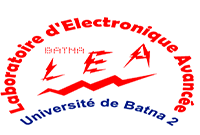Citation:
Abstract:
In this paper, we propose a new n-ZnO/p-Si hetero-junction solar cell design based on both interface engineering and metallic nanoparticles aspects. The merits of using both metallic nanoparticles and grooves morphology in the ZnO/p-Si interface to improve solar cell optical performance are investigated numerically using accurate solutions of Maxwell’s equations. It is found that the proposed structure suggests the possibility to achieve the dual role of improved light-scattering in the Si absorber layer as well as enhancing the absorption in the ZnO thin-film through the Surface Plasmon Resonance effect. Besides, the proposed design exhibits superior optical performance and offers improved total absorbance efficiency (TAE) as compared to the conventional counterpart. Moreover, particle swarm optimization (PSO)-based approach is exploited for the geometrical optimization of the proposed design to achieve higher light trapping capability. It is found that the optimized design yields 50% of relative improvement in the ZnO/p-Si-based solar cell TAE which confirms excellent capability of the proposed design approach for modulating the electric field behavior inside the solar cell structure. The obtained results indicate that the optimized n-ZnO/p-Si hetero-junction solar cell offer the potential for high conversion efficiency at low costs which make it valuable for photovoltaic application.
